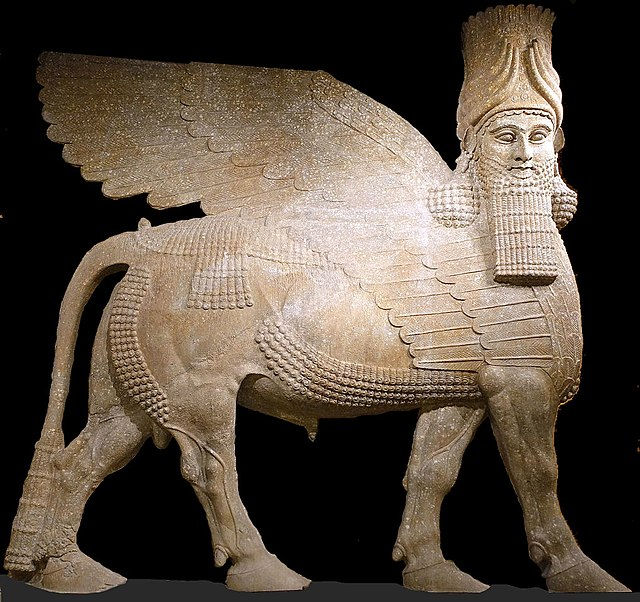#56: Narcissists, Strongmen, and Technocrats pt. 1
- Arnold Schroder

- Dec 24, 2022
- 4 min read
(12/23/2022) We examine a scientific case for revolution: that modern societies are forms of dominance hierarchy that grant power to people with extremely narrow frames of awareness, who are incapable of grappling with the crises that beset us. Reading from the unnamed Fight Like An Animal book, we examine a tripartite psychology: that of the Narcissists, Strongmen, and Technocrats, corresponding, respectively, to charismatic, coercive, and technical power. In each case, we also identify an egalitarian counterpart to these hierarchical modes. We argue that a coherent sociopolitical analysis requires six levels of description that exist in a relation of reciprocal influence: 1) ultimate evolutionary causes; 2) proximate mechanisms of trait construction; 3) species-typical behavior; 4) individual variation; 5) environmental conditions; 6) culture and politics. We then apply the first two of these levels to our assessment of the relationship between individual variation and power, examining mechanisms of developmental difference, the genetic regulatory hierarchy, individual difference as continua of reactivity, the cross-species durability of personality constructs, the lack of personality trait optima, and much more.
Bibliography for episode 56:
Alford, J. R., Funk, C. L. & Hibbing, J. R. (2005) Are political orientations genetically transmitted? The American Political Science Review 99(2):153-68.
Allik, Jüri & McCrae, Robert. (2004). Toward a geography of personality traits. Journal of Cross-Cultural Psychology. 35. 13-28. 10.1177/0022022103260382.
Benedict, R. (2006) Patterns of Culture. Mariner Books.
Bouchard, T. J., Segal, N. L., Tellegen, A., McGue, M., Keyes, M. & Krueger, R. (2003) Evidence of the construct validity and heritability of the Wilson-Patterson conservatism scale: A reared-apart twins study of social attitudes. Personality and Individual Differences 34:959–69.
Brown L. L., Acevedo, B., and Fisher, H. E. (2013) Neural correlates of four broad temperament dimensions: Testing predictions for a novel construct of personality. PLoS ONE 8(11): e78734. doi:10.1371/journal.pone.007873
Caceres, M., Lachuer, J., Zapala, M. A., Redmond, J. C., Kudo, L., Geschwind, D. H., Lockhart, D. J., Preuss, T. M. & Barlow, C. (2003) Elevated gene expression levels distinguish human from non-human primate brains. Proceedings of the National Academy of Sciences USA 100:13030–5.
Carney, D. R., Jost J.T. & Gosling, S. D. (2008) The secret lives of liberals and conservatives: Personality profiles, interaction styles, and the things they leave behind. Political Psychology 29: 807– 40.
Carroll, S. B. (2005) Endless Forms Most Beautiful: The New Science of Evo Devo. W. W. Norton.
Chabris, C. F., Lee, J. J., Cesarini, D., Benjamin, D. J., & Laibson, D. I. (2015) The fourth law of behavior genetics. Current Directions in Psychological Science 24(4):304–312. doi:10.1177/0963721415580430
de Waal, F. (2007) Chimpanzee Politics: Power and Sex among Apes. The John Hopkins University Press.
de Waal, F. (2022) Different: Gender through the Eyes of a Primatologist. WW. Norton and Company.
Dingemanse, N. J. (2010) Behavioural reaction norms: animal personality meets individual plasticity. Trends in Ecology and Evolution 25(2):81-89
Eaves, L. J., Heath, A. C., Martin, N. G., Maes, H. H., Neale, M. C., Kendler, K. S., Kirk, K. M., & Corey, L. (1999) Comparing the biological and cultural inheritance of personality and social attitudes in the Virginia 30,000 study of twins and their relatives. Twin Research 2:62-80.
Gilbert, S. F. (2006) Developmental Biology. 8th edition. Sinauer Associates.
Goodall, J. (1986) Chimpanzees of Gombe: Patterns of Behavior. Harvard University Press.
Gosling, S. D. & John, O. P. (1999) Personality dimensions in nonhuman animals: A cross-species review. Current Directions in Psychological Science 8(3):69-75.
Graeber, D. and Wengrow, D. (2021) The Dawn of Everything: A New History of Humanity. Farrar, Straus and Giroux.
Hatemi, P. K., Gillespie, N. A., Eaves, L. J., Maher, B. S., Webb, B. T., Heath, A. C., Medland, S. E., Smyth, D. C., Beeby, H. N., Gordon, S. D., Montgomery, G. W., Zhu, G., Byrne, E. M. & Martin, N. G. (2011) A genome-wide analysis of liberal and conservative political attitudes. Journal of Politics 73(1):1–15.
Hare, B. (2011) From hominoid to hominid mind: What changed and why? Annual Review of Anthropology 40:293-309.
Hare, B., Wobber, V., & Wrangham, R. (2012) The self-domestication hypothesis: evolution of bonobo psychology is due to selection against aggression. Animal Behaviour 83:573-85.
Hare, B. and Woods, V. (2020) Survival of the Friendliest: Understanding Our Origins and Rediscovering Our Common Humanity. Random House.
Heinrich, B. (2011) Conflict, cooperation and cognition in the common raven. Advances in the Study of Behavior 43:189-237.
Jost, J. T., Glaser, J., Kruglanski, A. W. & Sulloway, F. J. (2003) Political conservatism as motivated social cognition. Psychological Bulletin 129:339–75.
Kemp, L. et al. (2022) Climate endgame: exploring catastrophic climate change scenarios. PNAS 119(34) https://doi.org/10.1073/pnas.2108146119
Lachman, G. (2018) Dark Star Rising: Magick and Power in the Age of Trump. TarcherPerigee.
Lorenz, K. (1954) Psychology and phylogeny. In: Lorenz, K. (1971) Studies in Animal And Human Behaviour vol. 2. Harvard University Press.
McGilchrist, I. (2009) The Master and His Emissary: The Divided Brain and the Making of the Western World. Yale University Press.
Neiwert, D. (2016) Of Orcas and Men: What Killer Whales Can Teach Us. Harry N. Abrams.
Schroder, A. (2021) The World Got a Lot Like the Internet. Technology and Political Psychology Have Entered a Strange Feedback Loop, Making the 2020s the Authoritarian 1960s. Against the Internet. https://www.againsttheinternet.com/post/the-world-got-a-lot-like-the-internet
Scott, J. C. (2009) The Art of Not Being Governed: An Anarchist History of Southeast Asia. Yale University Press.
Somel, M., Franz, H., Yan, Z., Lorenc, A., Guo, S., Giger, T., Kelso, J., Nickel, B., Dannemann, M. & Bahn, S. (2009) Transcriptional neoteny in the human brain. Proceedings of the National Academy of Sciences, U.S.A. 106:5743-8.
Spitzer, M., Fischbacher, U., Herrnberger, B., Gron, G., and Fehr, E. (2007) The neural signature of social norm compliance. Neuron 56:185–196.
Theofanopoulou, C., Gastaldon, S., O’Rourke, T., Samuels, B. D., Messner, A., Martins, P. T., Boeckx, C. (2017). Self-domestication in Homo sapiens: Insights from comparative genomics. PLOS ONE, 12(10), e0185306. doi:10.1371/journal.pone.0185306
Tooby, J., & Cosmides, L. (1992) The Psychological Foundations of Culture. In: Barkow, J., Cosmides, L. & Tooby, J., eds. The Adapted Mind: Evolutionary Psychology and the Generation of Culture. Oxford University Press.
Trut, L. N., Plyusnina, I. Z. & Oskina, I. N. (2004) An experiment on fox domestication and debatable issues of evolution of the dog. Russian Journal of Genetics 40(6):644–55.
Tuschman, A. (2013) Our Political Nature: The Evolutionary Origins of What Divides Us. Prometheus Books.
Weber, M. (1946) Politics As a Vocation. Hassell Street Press.
West-Eberhard, M. J. (2005) Developmental plasticity and the origin of species differences. PNAS 102:6543-6549. DOI: 10.1073?pnas.0501844102
Wilkins, A. S., Wrangham, R. W., & Fitch, W. T. (2014). The “domestication syndrome” in mammals: A unified explanation based on neural crest cell behavior and genetics. Genetics, 197(3), 795–808. doi:10.1534/genetics.114.165423

Image from Wikimedia Commons Under a Creative Commons Attribution-Share Alike 4.0 License




Comments